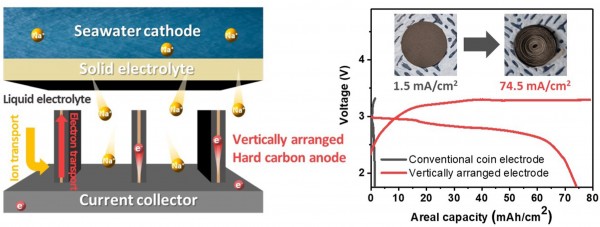Vertically arranged electrode structures with high energy density for seawater batteries
- Journal
- Journal of Power Sources
- Year
- 2024
Seawater batteries (SWBs) have attracted considerable attention as next-generation batteries owing to their high theoretical energy density and low cost. However, the practical energy density of SWBs is lower than that of conventional sodium-ion batteries as they contain a solid electrolyte with thickness limitations and inflexible mechanical properties. Considering the structure of SWBs, an increase in the anode thickness is required; however, the conventional high-mass-loading approaches are constrained by electrochemical and physical characteristics such as sluggish ion diffusion and delamination. In this study, we report the vertical arrangement of a conventional electrode to overcome the structural instability of the thick electrode and enable facile ion and electron transport by generating a vertically arranged electrode structure (VAES), which is verified using 3 different factors namely, vertical thickness, electrode compactness, and vertical angle. The electrode structures applied to the SWB anode exhibit a specific capacity of approximately 220 mAh/g over 100 cycles, achieving a high areal capacity of 75 mAh/cm2 in the coin cell, which is 50 times higher than that of a single-sheet electrode. This study demonstrates an efficient strategy to increase the energy density of SWB and provides valuable insights into the electrochemical characteristics of vertical electrode systems.

